|
Insects and their relatives are all animals (Kingdom: Animalia) that belong to the group or phylum called Arthropoda. These all share many characteristics, including possessing segmented bodies and jointed
appendages (legs and antennae). The following five classes of Arthropods are quite common and insect collectors should be able to recognize them. The Latin or Greek translations of their scientific names (provided in parentheses following the name) are helpful in separating these groups.
 Spider
spiders, mites, ticks, scorpions, harvestmen
An arachnid has four pairs of legs, lacks antennae, and possesses a head and thorax that is combined into one part called a cephalothorax.
The arachnids represent the second-largest and (next to insects) second most agriculturally injurious class of arthropods. Arachnids have very diverse life histories. Most spiders are beneficial predators. Most ticks are parasitic and some may transmit important diseases to people. Mites can be beneficial predators, parasites on insects and mammals, or extremely damaging pests on plants.

Mite

Scorpion

Harvestman
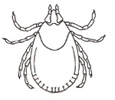
Tick
 Centipede
centipedes
A centipede has a long, flattened, many-segmented body with one pair
of legs attached to each body segment. It also has a pair of moderately long antennae.
Centipedes are often confused with millipedes, but they differ by having more flattened bodies, one pair of legs per body segment, and the ability to move quite rapidly. Centipedes
are always predatory upon other small arthropods and each centipede possesses a pair of strong fangs, which it uses to hold and poison their prey.
 Lobster
lobsters, crabs, sowbugs, shrimp
A crustacean has a hardened exoskeleton, at least five pairs of legs and a cephalothorax. Some have two pairs of antennae.
The class crustacea contains many aquatic animals, including crayfish, lobsters, and prawns, which are important human foods. Insect collectors very commonly encounter one order of this class in terrestrial environments. This order (Isopoda) includes the sowbugs and pillbugs. Both sowbugs and pillbugs occasionally feed on vegetable matter, but seldom cause damage. Isopods breathe through gills that must be kept wet and, therefore, must remain in relatively moist habitats. As a result, they are commonly found under rocks, logs, mulch, or other debris on the ground or in wooded areas. Isopods have seven pairs of legs and shield-shaped heads. The pillbug is recognized by most as the tiny animal that rolls itself into a tight ball when disturbed.

Sowbug

Shrimp
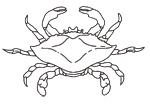
Crab
 Millipede
millipedes
Millipedes have long rounded, many-segmented bodies with two pairs
of legs attached to each body segment. They each have one pair
of antennae.
The millipedes are slow-moving, wormlike arthropods. They eat plants, but seldom cause economic damage to them. They normally feed on dead or decaying plant matter. Millipedes can become nuisance pests in and around homes where they live under patio decks, crawl spaces, and often
landscape mulch.
 Bugs
insects
Insects have six legs, three body parts and two antennae in their adult form.
The largest and most important class of Arthropods is Hexapoda. Hexapods range in size from very tiny (almost too small to be seen with the naked eye) to quite large. As a group, insects are the most damaging pests of human foods, both during production and storage. Certain insects damage ornamental plants, agricultural crops, and stored foods. Some damage structures and buildings, and some transmit very important diseases to people. Other insects are beneficial organisms to the environment, our economy, or human health and welfare. Most add to the beauty and interest of nature.
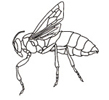
Bees & Wasps
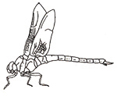
Dragonflies

Beetles

Earwigs
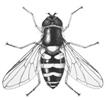
Flies
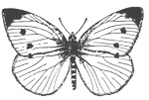
Butterflies & Moths
|


















